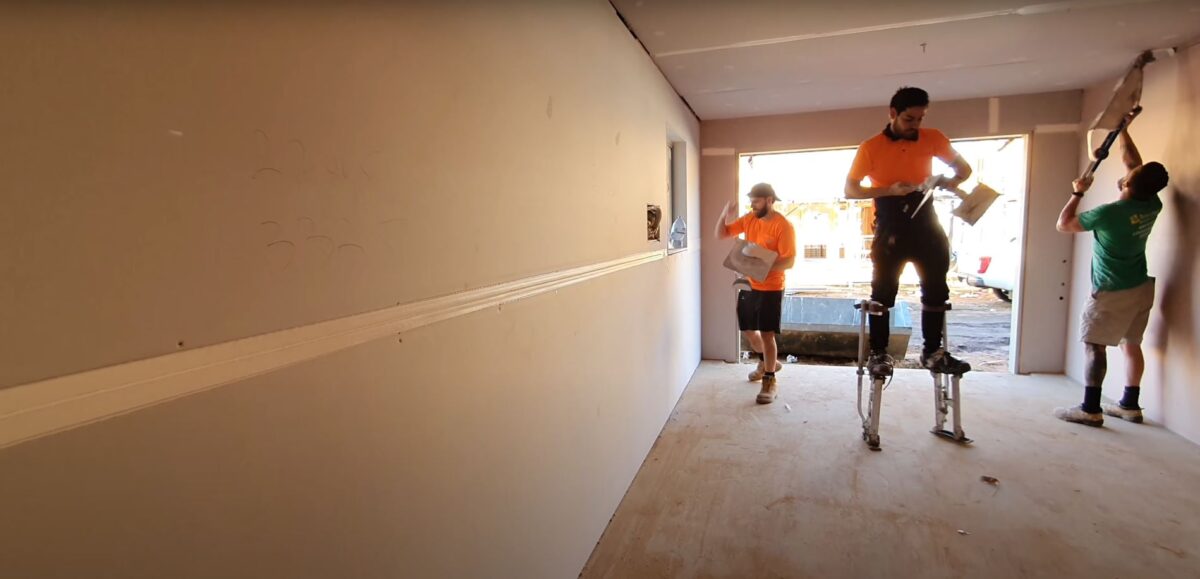GIB Stopping: A Deep Dive into the Name and Necessity
The Etymology of GIB Stopping
While most Aucklanders will have heard of “GIB”, few realise that the term is unique to New Zealand and actually comes from a brand name. GIB is a trademarked brand of gypsum board, a type of drywall. Over time, the brand became synonymous with the product itself, much like “Hoover” did for vacuum cleaners in some parts of the world. When we talk about GIB stopping, we are essentially referring to the process of finishing and smoothing the joints and screws in gypsum board walls.
Why GIB Stopping is Essential
Once the GIB boards are fixed in place, they exhibit visible joints and screw indentations. GIB stopping ensures these seams and indentations are smoothed over, resulting in a continuous and even surface ready for painting or wallpapering. Not just an aesthetic endeavour, proper stopping also adds to the structural integrity of the wall.
Auckland’s Unique Plastering Demands
In suburbs like Ponsonby and Remuera, Auckland’s unique climate and older housing stock present their own challenges. The city’s humid environment means that plaster needs to be resistant to mould and mildew. Additionally, many homes in these suburbs have been standing for decades, if not longer, and require materials compatible with older building techniques.
Bylaws and Regulations in Auckland
Like all construction processes, plastering is governed by specific guidelines. In Auckland, certain council bylaws require adherence to standards, ensuring homes are not only beautiful but safe. For instance, Ponsonby homes might have heritage status that dictates the type of materials and techniques used. Meanwhile, in Remuera, zoning codes could affect how extensive your plastering project might be.
Tools of the Trade
- Jointing Knives: Essential for applying and smoothing plaster.
- Hawks: A tool to hold the plaster before application.
- Mixing Drills and Paddles: For preparing the plaster.
- Sanding Blocks: Crucial for achieving that smooth finish.
Each tool has its own purpose, and understanding when and how to use them is key to a successful GIB stopping job.
Types of Plaster and Their Uses
| Type of Plaster | Advantages | Limitations | Best Use Cases |
| Gypsum Plaster | Easy to apply, dries quickly | Less durable than some alternatives | Interior walls |
| Lime Plaster | Breathable, flexible | Takes longer to set | Older, historic homes |
| Cement Plaster | Extremely durable | Can be harder to work with | Exterior walls and wet areas |
| Venetian Plaster | Aesthetic appeal | Requires skilled application | Feature walls, decorative finishes |
Benefits of Engaging a Professional GIB Stopper
While some enthusiastic DIYers might be tempted to undertake GIB stopping on their own, the intricacies of the process, coupled with Auckland’s specific requirements, often mean it’s a task best left to professionals. Professionals bring with them expertise, knowledge of bylaws, and the right tools for the job. Most importantly, they ensure the final result is polished, smooth, and up to code.
In Conclusion
While the term “GIB” might have a simple origin story, the process of GIB stopping is anything but. It’s an essential part of the construction process, ensuring homes in Auckland are not only beautiful but built to last. So, if you’re considering a renovation or building project, remember the importance of expert GIB stopping and fixing – it’s one area where cutting corners simply won’t do.
Frequently Asked Questions about GIB Stopping
Why is it called GIB stopping?
The term “GIB” originates from a trademarked brand of gypsum board in New Zealand. Over time, this brand became synonymous with the product. “Stopping” refers to the process of finishing and smoothing joints and screws in gypsum board walls.
Is GIB stopping necessary for all GIB installations?
Yes, GIB stopping is essential to ensure a continuous, even surface on the gypsum board, making it ready for painting or wallpapering. It’s not just for aesthetic purposes; proper stopping also contributes to the wall’s structural integrity.
Can I do GIB stopping myself?
While it’s possible for homeowners to attempt GIB stopping as a DIY project, the process has intricacies that often require professional expertise, especially when complying with Auckland’s specific requirements and bylaws.
What tools are essential for GIB stopping?
Some of the critical tools include jointing knives, hawks for holding plaster, mixing drills and paddles for preparing plaster, and sanding blocks to achieve a smooth finish.
Are there different types of plaster used in GIB stopping?
Yes, there are various types of plaster, including gypsum plaster, lime plaster, cement plaster, and Venetian plaster. Each has its own advantages, limitations, and best use cases.
How does Auckland’s climate affect GIB stopping?
Auckland’s humid environment means that the plaster used should be resistant to mould and mildew. Also, certain older homes, especially in suburbs like Ponsonby, may require materials compatible with historical building techniques.
Do I need to be aware of any bylaws when undertaking GIB stopping in Auckland?
Yes, specific Auckland council bylaws govern plastering to ensure homes are safe and up to standard. For example, some Ponsonby homes with heritage status have guidelines on materials and techniques.
How long does GIB stopping take?
The duration depends on the size of the area being worked on and the type of plaster used. For instance, lime plaster takes longer to set than gypsum plaster. However, engaging a professional can expedite the process due to their expertise and efficiency.
Is it more expensive to hire a professional for GIB stopping?
While hiring a professional might seem like an added expense initially, their expertise ensures the job is done right the first time, potentially saving on future repairs and refinishing. They also ensure compliance with local regulations, avoiding potential fines or redoing work.
